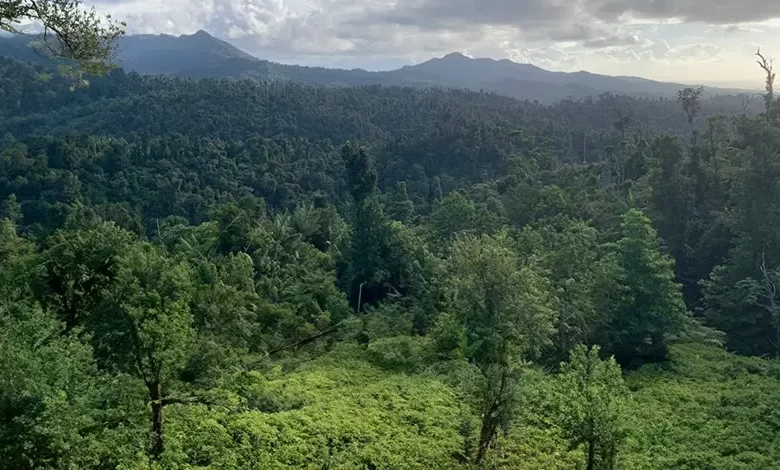Rainforests of Dominica

Rainforests are an essential feature of Dominica, covering much of the island’s rugged landscape and showcasing some of the most diverse ecosystems in the Caribbean. With dense vegetation, towering trees, and abundant rainfall, Dominica’s rainforests offer an ideal environment for flora and fauna, making it a key destination for Eco-Tourism and Adventure Tourism. The rainforests are managed and conserved by various government bodies, including the Ministry of Environment, Rural Modernisation, and Kalinago Upliftment and the Forestry, Wildlife & Parks Division, who work to preserve these crucial ecosystems and the endemic species they support.
Biodiversity and Flora in Dominica’s Rainforests
Dominica’s rainforests are rich in unique plant species, including native trees like the Bois Bande, Gommier, and Balata, alongside colourful orchids, ferns, and mosses. The rainforests also support significant biodiversity hotspots like Morne Trois Pitons National Park and Northern Forest Reserve. Visitors can encounter rare species within these areas, such as the Sisserou Parrot and Jaco Parrot, both endangered species endemic to Dominica. These rainforests are invaluable habitats, providing refuge for various plants, mammals like the Agouti and Manicou, reptiles like the Abòlò and Tete-Chien (Clouded Boa Constrictor), and insects contributing to the island’s unique biodiversity. The Environmental Coordinating Unit (ECU) oversees ecosystem management, promoting reforestation and forest preservation to maintain these critical services.
Conservation and Resilience Initiatives
In recent years, Dominica’s rainforests have symbolized resilience, particularly following the devastation of Hurricane Maria in September 2017, which destroyed approximately 85 percent of the island’s forests. This catastrophic loss prompted government-led reforestation initiatives, including a nationwide tree-planting program. Supported by global partnerships like PROGREEN and technical assistance from the World Bank, these efforts have enabled Dominica’s forests to regenerate, restoring critical natural barriers against future climate threats. As Her Excellency Sylvanie Burton stated, “If we do not have the forest, then we’ll be in trouble.”
National Forest Policy and Sustainable Development
In 2022, Dominica’s government adopted a National Forest Policy with technical guidance from the World Bank and partners, marking the first update since 1949. This policy provides a framework for the sustainable management and conservation of forest resources, empowering nature preservation and economic opportunities for communities near forest areas. The policy includes modernizing protected forest areas through projects like Leveraging Eco-Tourism for Biodiversity Protection in Dominica, which supports sustainable tourism by enhancing infrastructure, offering skills training, and integrating e-ticketing for forest reserves.
The Role of Eco-Tourism and Community Involvement
Dominica’s rainforest ecosystem plays a foundational role in the Eco-Tourism Industry. It supports the livelihoods of communities like the Kalinago Territory, home to the indigenous people of Dominica, the Kalinago. Eco-tourism initiatives, supported by the Global Environment Facility, offer new employment opportunities and skills training, particularly in forest-adjacent areas. By encouraging local communities and the Kalinago to participate in forest management, the government aims to balance economic growth with environmental stewardship, promoting long-term sustainability.
A Model for Climate Resilience
Dominica’s rainforests are integral to its mission of achieving climate resilience. By investing in forest conservation and sustainable practices, the government, supported by international partnerships, aims to protect biodiversity while creating economic opportunities through eco-tourism. Dominica’s approach exemplifies a balance between nature and development, aiming to secure a climate-resilient future in the Caribbean.




